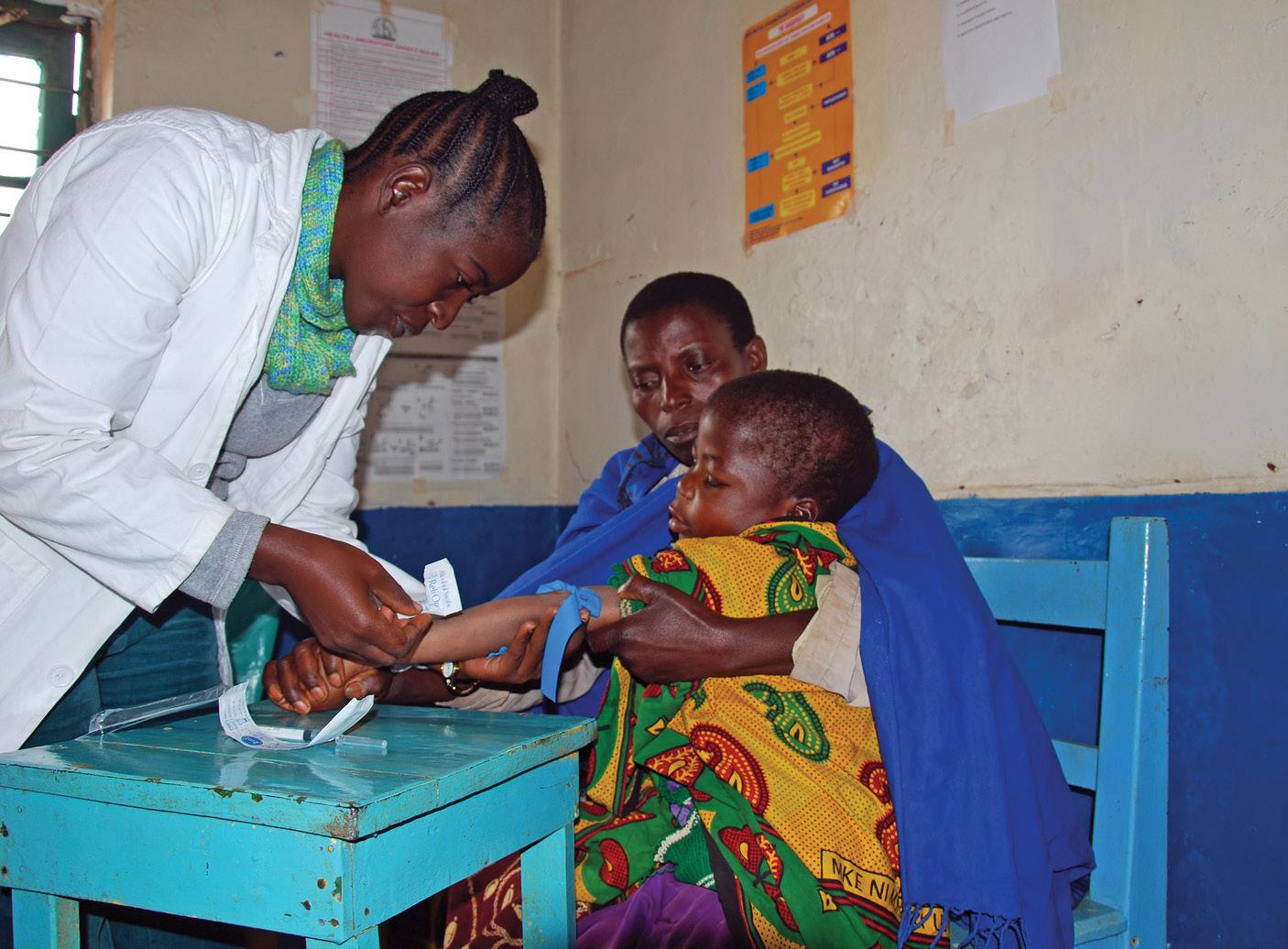
3 minute read
Topic Area 8: Continuing Funding for Disease Detection & Prevention Programs
from Global Leadership at a Crossroads: Are we Prepared for the Next Pandemic? SECOND EDITION
by Texas A&M School of Veterinary Medicine & Biomedical Sciences
CONTINUING FUNDING FOR DISEASE DETECTION & PREVENTION PROGRAMS What is the importance of disease detection and prevention programs? There are a handful of major disease detection and prevention programs currently operating internationally that are funded by the United States. They include the CDC Global Disease Detection (GDD) Program, USAID Emerging Pandemic Threats (EPT) Program, Department of State Biological Engagement Program, and DOD Global Emerging Infections Surveillance Program and Cooperative Biological Engagement Program (CBEP). Along with the CDC GDD that maintains international laboratories for early warning, DOD also operates longstanding Army and Navy overseas research laboratories that provide unique laboratory and biosurveillance capabilities in host countries and surrounding regions, which facilitate international collaboration and protection of deployed United States service members and allies.
PREDICT is just one program within the Emerging Pandemic Threats (EPT) program at USAID. Overall, the EPT program focuses on various ways to strengthen disease prevention, detection, and response capabilities in developing countries through their PREDICT, PREVENT, IDENTIFY, and RESPOND programs. Of the four EPT programs, however, only PREDICT is focused on identifying deadly diseases before they spillover into the human population. DOD’s Defense Advanced Research Projects Agency (DARPA) announced a new initiative called PREEMPT to prevent spillover of emerging pathogenic threats by using innovative systems biology approaches to enable near-real time surveillance and
Advertisement

interventions in high risk countries, and CBEP is placing more emphasis on establishing laboratory institutional capacities in priority, high-risk countries. PREDICT currently works in 30 countries, using the One Health approach and minimizing pandemic risk through a number of areas. These areas are: surveillance, laboratory platform, behavioral risk, capacity strengthening, modeling and analytics, and information management (UC Davis, 2017). In addition to PREDICT, the Global Virome Project (GVP) has been proposed by USAID and other NGOs. The proposed project is a 10-year public/private consortium with the goal of identifying unknown viruses from around the world. By attempting to identify and categorize viruses from around the world, the GVP is working to determine what viral threats the world is facing before they cause a major pandemic. The goal of the program is not only to identify unknown viruses, but also host ranges and behaviors that lead to spillover. The GVP anticipates six key benefits from the program. The first is that the project will characterize the geographic scope and host range of viruses. Through the work of the project scientists, we will have a better understanding of reservoirs and transmission dynamics. The second key benefit is that GVP can identify behaviors that cause spillover and implement mitigation strategies. Third, the project can monitor the movement of viruses across regions. Fourth, the project will allow countries and international organizations to establish global surveillance networks and strengthen local disease surveillance capacity. Lastly, the GVP is expected to identify “transmission and pathogenicity markers” for
viruses considered high risk and help establish a legal and regulatory framework for sharing these data. While USAID and DOD are supporting the most innovative disease detection and prevention programs as envisioned by the National Strategy for Biosurveillance, there is a need for additional innovation, institutional capacity building in high-risk host country, and resources focused on identifying potentially deadly diseases before they are spillover into the human population. The vast majority of emerging diseases is of zoonotic origin and often experience contact with humans on several occasions before they are able to make the jump to human-to-human transmission, which would then require a One Health approach. Identifying these viruses and mitigating the risk they pose to the human population are vitally important to pandemic preparedness and global health security into the future.

RECOMMENDATIONS 19. Continue funding for innovative biosurveillance, detection, and prevention programs. Our recommendation is simple: Continue funding innovative infectious disease detection and prevention programs along with riskbased investments in host country institutional capacities to realize near-time biosurveillance and situational awareness as envisioned in the National Strategy for Biosurveillance. This is vital to enable rapid response and focused preparedness investments. These programs are countries’ first line of defense against the next pandemic. If scientists can identify diseases before they reach the human population, millions of lives may be saved. But these programs cannot operate without funding commitments from the United States government. The United States should make these programs a priority.










